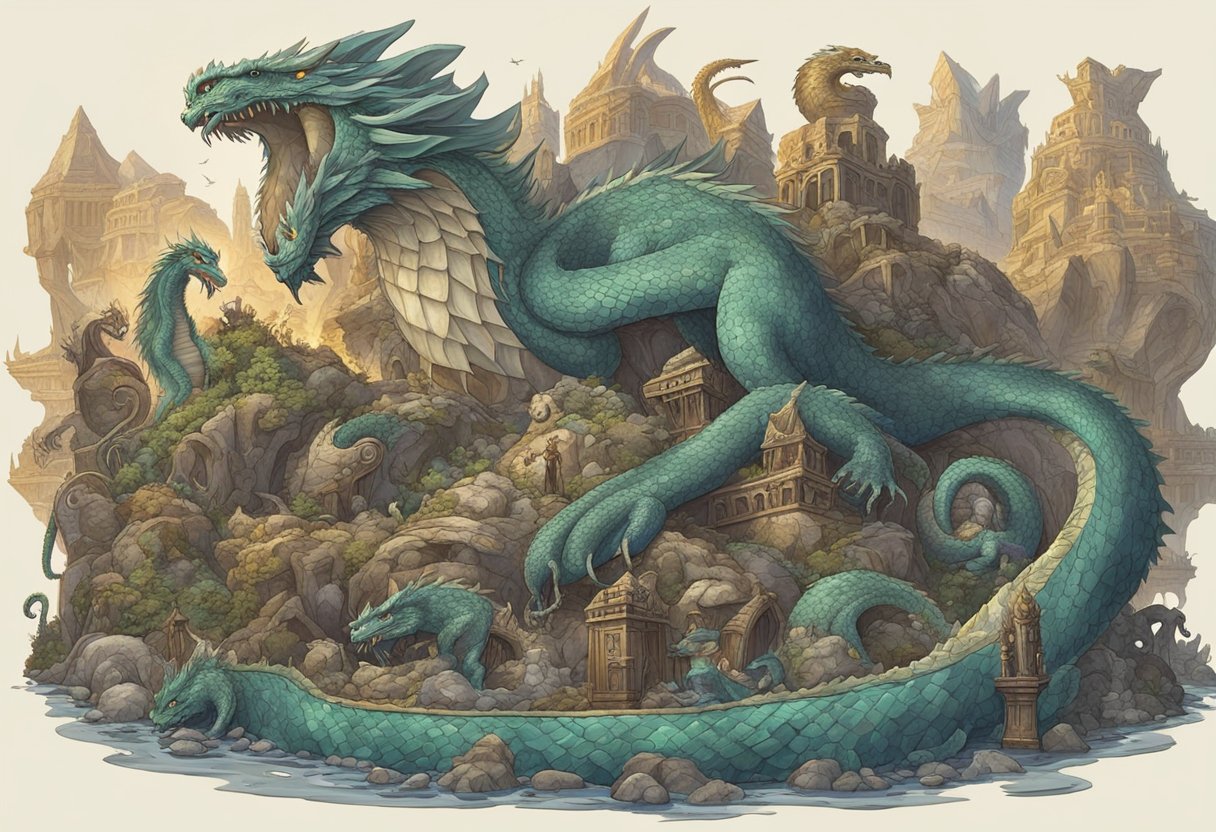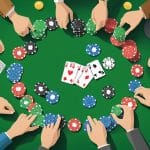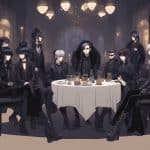Types Of Monsters
Monsters have been a part of human mythology and folklore for centuries. These creatures come in all shapes and sizes, and their origins and meanings vary greatly across different cultures. From ancient legends to modern-day horror movies, monsters continue to fascinate and terrify people around the world.
Historically, monsters have often been used to explain natural phenomena or to represent societal fears and anxieties. For example, dragons were believed to be responsible for natural disasters such as earthquakes and floods, while vampires and werewolves were used to explore themes of uality and power. Today, monsters continue to serve as a reflection of our deepest fears and desires, and they remain a popular subject in literature, film, and other forms of media.
Key Takeaways
- Monsters have been a part of human mythology and folklore for centuries, and their origins and meanings vary greatly across different cultures.
- Historically, monsters have often been used to explain natural phenomena or to represent societal fears and anxieties.
- Today, monsters continue to serve as a reflection of our deepest fears and desires, and they remain a popular subject in literature, film, and other forms of media.
Historical and Cultural Origins

Monsters have been a part of human history and culture for centuries, appearing in folklore, mythology, and religion. These mythical creatures have been used to explain natural phenomena, warn of dangers, and represent human fears and desires. In this section, we will explore the historical and cultural origins of monsters, including their evolution and regional variations.
Folklore and Mythology
Many monsters have their roots in folklore and mythology, where they were used to explain natural disasters, disease, and other mysterious events. For example, the Greek myth of the Chimera, a creature with the head of a lion, body of a goat, and tail of a serpent, was used to explain volcanic eruptions. Similarly, the Norse myth of the Jotunn, giant creatures who lived in the mountains, represented the power of nature and the dangers of the unknown.
Legendary Creatures and Their Evolution
Over time, many monsters evolved from their original forms into new, more complex creatures. For example, the vampire of Eastern European folklore, a creature that drank the blood of the living, evolved into the modern vampire of popular culture, who can transform into a bat and is vulnerable to sunlight. Similarly, the werewolf, a creature that could transform into a wolf, evolved into the modern werewolf, who is often portrayed as a cursed human who transforms into a wolf during the full moon.
Regional Variations
Monsters also vary by region, with different cultures and traditions creating their own unique creatures. For example, in Haitian folklore, the zombie is a reanimated corpse brought back to life by a sorcerer, while in Indonesian mythology, the pontianak is a female ghost who haunts the jungle. In Europe, creatures like the dragon and the unicorn have become part of the region’s cultural identity, while in Asia, the dragon and the phoenix are symbols of power and good fortune.
Overall, monsters have played an important role in human history and culture, representing our fears, desires, and the mysteries of the natural world. From folklore and mythology to modern pop culture, these mythical creatures continue to capture our imagination and inspire new stories and legends.
Types of Monsters
Monsters have been a part of human mythology and folklore for centuries. They are often depicted as terrifying and dangerous creatures that instill fear in those who encounter them. In this section, we will explore some of the most common types of monsters found in various myths, legends, and fiction.
Mythical Beasts and Deities
Mythical beasts and deities are creatures that are often associated with ancient mythology and religion. These creatures are often depicted as powerful and majestic beings with supernatural abilities. Some of the most well-known mythical beasts include dragons, griffins, hydras, chimeras, centaurs, cyclops, krakens, medusas, gorgons, sirens, and mermaids. These creatures are often associated with danger and terror.
Undead and Ghostly Entities
Undead and ghostly entities are creatures that are often associated with horror and fear. They are often depicted as spirits or corpses that have risen from the dead to haunt the living. Some of the most well-known undead and ghostly entities include vampires, zombies, ghosts, banshees, dullahans, and poltergeists. These creatures are often associated with darkness and terror.
Shape-Shifters and Transformative Beings
Shape-shifters and transformative beings are creatures that have the ability to change their form or appearance. They are often depicted as dangerous and unpredictable creatures that can take on various forms. Some of the most well-known shape-shifters and transformative beings include werewolves, oni, bogeymen, tikbalangs, wendigos, and bunyips. These creatures are often associated with danger and terror.
In conclusion, monsters have been a part of human mythology and folklore for centuries. They come in many different forms and are often associated with fear and danger. Whether they are mythical beasts, undead entities, or shape-shifters, monsters continue to fascinate and terrify us with their supernatural abilities and otherworldly powers.
Monsters in Literature and Media
Monsters have been a popular subject in literature and media for centuries. They have been used to scare and entertain audiences, and to explore deeper themes and ideas. This section will explore the different types of monsters found in classic literature, modern fiction and films, and their influence on popular culture.
Classic Literature
Classic literature has given us some of the most iconic monsters of all time. Bram Stoker’s “Dracula” introduced the world to the vampire, a creature that feeds on human blood and has the power to transform into a bat. Mary Shelley’s “Frankenstein” created the image of a mad scientist who creates a monster from body parts and brings it to life. These two works have been adapted countless times in various forms of media, cementing their status as classics.
Modern Fiction and Films
Modern fiction and films have introduced new types of monsters, as well as new takes on classic ones. Zombies have become a popular subject, with works such as “The Walking Dead” and “World War Z” exploring the idea of a world overrun by the undead. Witches have also made a comeback, with shows like “American Horror Story: Coven” and “The Chilling Adventures of Sabrina” portraying them as powerful and complex characters.
Other monsters have also gained popularity in recent years. The banshee, a female spirit from Irish mythology that foretells death, has been featured in shows like “Supernatural” and “Teen Wolf”. Bigfoot and the Loch Ness Monster, creatures of legend, have been the subject of numerous documentaries and reality shows. The Yeti, a creature said to inhabit the Himalayan region, has been featured in films like “Abominable” and “Missing Link”.
Influence on Popular Culture
Monsters have had a significant impact on popular culture, inspiring countless works of fiction, films, and other forms of entertainment. They have also been used to explore deeper themes and ideas, such as the nature of humanity and the fear of the unknown. From vampires and zombies to witches and banshees, monsters will continue to captivate audiences for generations to come.
Psychological Interpretation of Monsters
Monsters have been a part of human culture for centuries, and they continue to fascinate and scare us to this day. From ancient myths to modern horror movies, monsters have taken on many different forms and meanings. In this section, we will explore the psychological interpretation of monsters, including their symbolic and psychoanalytic significance.
Monsters as Symbols of Fear
One of the most common interpretations of monsters is that they represent our fears and anxieties. Whether it’s a giant spider or a serial killer, monsters often embody the things that scare us the most. By confronting these fears through the medium of a monster, we can gain a sense of control over them.
Monsters in Dreams and Psychoanalysis
Monsters also play a significant role in our dreams and in psychoanalysis. Sigmund Freud believed that the monsters in our dreams are created by our unconscious mind and reflect our current worries and fears, even those we fail to consciously acknowledge. Monsters can also represent repressed desires or memories that we are afraid to confront.
In psychoanalysis, monsters can be used as a tool to uncover and explore the deeper aspects of our psyche. By analyzing our dreams and the monsters that appear in them, we can gain insight into our subconscious thoughts and emotions.
Overall, monsters have a complex and multifaceted psychological significance. They can represent our fears, desires, and subconscious thoughts, and they can be a powerful tool for exploring our inner selves. Whether we encounter them in our dreams or in our favorite horror movie, monsters will continue to fascinate and scare us for years to come.
Mythical Versus Real: The Blurring Lines
The line between mythical and real monsters has always been blurred. While some monsters are purely fictional, others are based on real-life creatures or events. In this section, we will explore the different ways that the lines between mythical and real monsters have been blurred.
Cryptozoology and Modern Myths
Cryptozoology is the study of animals that are rumored to exist but have not yet been proven to exist. This field of study has given rise to many modern myths, such as Bigfoot, the Loch Ness Monster, and the Yeti. These creatures are often described as being large, hairy, and elusive, with sightings reported all over the world. While there is no scientific evidence to support the existence of these creatures, many people believe in them and continue to search for proof of their existence.
Scientific Explanations and Discoveries
While some monsters are purely mythical, others have a basis in reality. For example, many legendary creatures, such as dragons and unicorns, were likely inspired by real-life animals. Similarly, some myths and legends may have been based on real-life events, such as natural disasters or plagues.
In recent years, scientific discoveries have also shed new light on the world of monsters. For example, the discovery of dinosaur fossils has given rise to new theories about the creatures that once roamed the earth. Similarly, advances in genetic research have led to the discovery of new species of animals, some of which were previously thought to be mythical.
In conclusion, the line between mythical and real monsters is often blurred. While some monsters are purely fictional, others have a basis in reality. Whether they are based on legends, myths, or natural phenomena, monsters continue to capture our imaginations and inspire us to explore the unknown.
Conclusion
In conclusion, monsters have played a significant role in human culture throughout history. They have been depicted in various forms, from folklore and mythology to literature and cinema. Different types of monsters have different origins and characteristics, but they all share a common trait: they represent the unknown, the dangerous, and the mysterious.
Monsters can be categorized into various types, such as supernatural monsters, mythological monsters, and fictional monsters. Each type has its own unique characteristics and has been used to convey different messages and meanings throughout history. For example, supernatural monsters like vampires and werewolves have been used to explore themes of mortality, while mythological monsters like the Minotaur and Medusa have been used to symbolize human fears and flaws.
In modern times, monsters continue to be a popular subject in popular culture, with movies, TV shows, and video games featuring various types of monsters. From Godzilla to the Xenomorph, monsters continue to capture our imagination and provide us with a sense of thrill and excitement.
Overall, monsters remain a fascinating and enduring subject, and their continued popularity is a testament to their enduring appeal and relevance in human culture.






